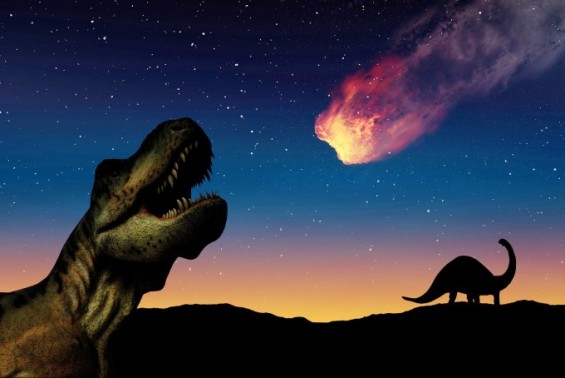It is hypothesized that an asteroid, believed to have destroyed the dinosaurs when it fell to Earth 66 million years ago, flew from the outermost part of the solar system. Provided by Pixar Bay
–
–
An analysis found that an asteroid, believed to have caused the extinction of dinosaurs 66 million years ago, fell near the Yucatan Peninsula in Mexico and flew from the outermost part of the solar system to Earth under the influence of the gravity of Jupiter and the Sun.
Abi Loeb, a professor at Harvard University’s Faculty of Astrophysics in the U.S., said that a giant asteroid that fell to Mexico and created a “Chicxulub collision sphere” with a diameter of about 150 km and a depth of about 20 km, is different from the previous theory. It is believed to have come from’Cloud’, announced on the 15th in the international academic journal’Scientific Reports’.
It is estimated that an asteroid impact 66 million years ago caused a major extinction, killing 75% of the planet’s life forms, including dinosaurs, while having a great impact on the global environment. The asteroid is believed to have come from an asteroid belt located between Mars and Jupiter. A research team from the US and the Czech Republic published a study in Nature in 2007 that estimated that a part of the Baptistina asteroid group, which was created when two asteroids collided between Mars and Jupiter, changed orbits. The Baptistina asteroid group consists of more than 300 fragments over 10 km and fragments over 1 km in diameter.
After statistical analysis and gravitational simulation, the research team revealed a scenario in which the solar system behaves like a pinball machine and it is possible to send asteroids far away from the solar system to Earth. Long-period comets orbiting the Sun often form in the Orth cloud for long periods of more than 200 years. The comet moves out of orbit by Jupiter’s gravitational field and gradually approaches the Sun. As a result, the comet becomes a’sunglazing comet’ that approaches very close to the sun. The comet splits into several fragments at the end of a tidal fission, a phenomenon in which the sun’s great gravitational force causes the gravitational difference between the near and far regions of the sun.
As the fragmented comet returns to the Ort cloud, the likelihood of one of the fragments hitting the Earth increases. The research team revealed that the probability of long-period comets affecting the Earth is 10 times higher than before, and that 20% of long-period comets became sunglazing comets.
As a basis for supporting this theory, the research team pointed to the fact that the material of the asteroid that made the Cheeksulub impact sphere is made of carbonaceous chondrite. Chondrite is a component made when the early solar system was created. In the asteroid belt between Mars and Jupiter, there are about 10% of asteroids made of carbonaceous chondrites. On the other hand, the Oort cloud belt is mostly made of carbonaceous chondrites.
Professor Loeb said, “We need to see the little fragments coming from the Ort cloud to Earth more often to solve the mystery of Earth’s history and ascertain its potential to threaten the Earth. It was an amazing sight, but I don’t want to see it again.” said.
– .


